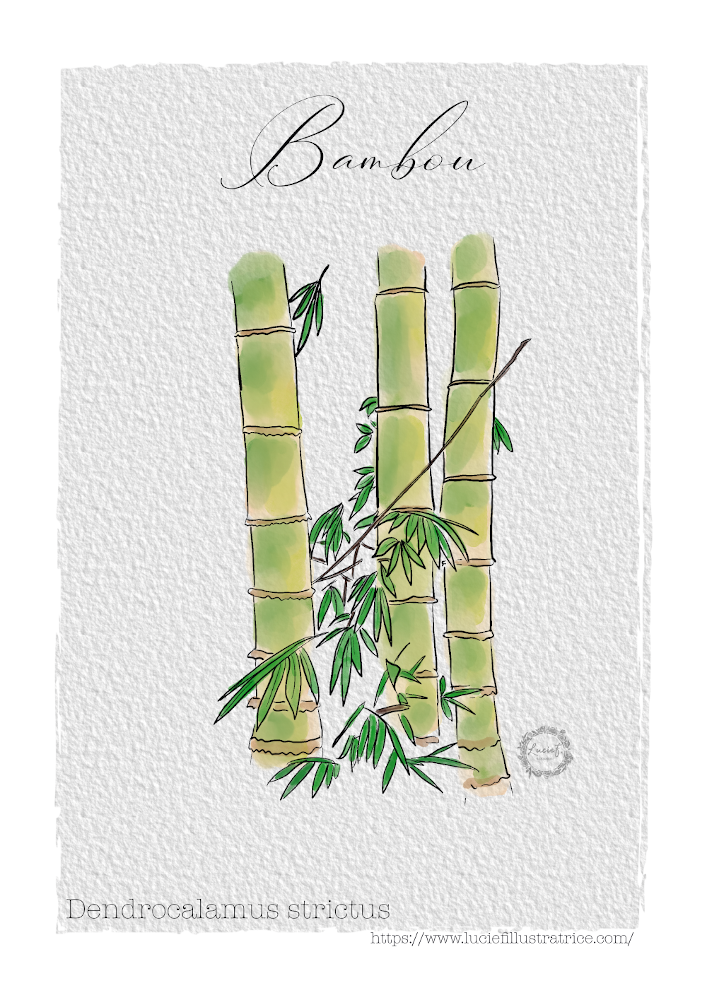! Nouveau site ici !
Vita > Plantae > Magnoliophyta > Liliopsida > Cyperales >
Poaceae > Dendrocalamus
Dendrocalamus strictus

 | *** - *
| *** - *
Vita > Plantae > Magnoliophyta > Liliopsida > Cyperales >
Poaceae > Dendrocalamus
Dendrocalamus strictus

Un bambou. Il est densément touffeté. Dans les zones humides, il garde ses feuilles et dans les zones sèches, il les perd. Il pousse environ 8-16 m de haut. Les tiges mesurent 4 à 10 cm de diamètre. Ils so... (traduction automatique)
→suite
⬀
Le  donne accès au menu
donne accès au menu (c'est votre point de repère) 😊 ;
En dessous vous avez la classification, à partir de la vie (Vita, premier rang) jusqu'à la classe au dessus de la plante, dont vous trouvez ensuite le nom scientifique/botanique (latin) puis le nom commun (français), le cas échéant ;
C'est aussi un lien vers la fiche complète (tout comme la ✖, en bas à droite, et le +, en dessous de la description) ;
Vient alors l'illustration (ou ce qui la remplace, en attendant), la comestibilité :
Et en bas
⬂



